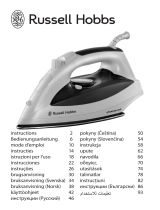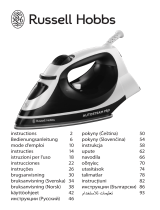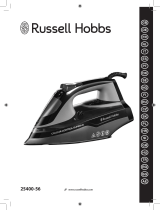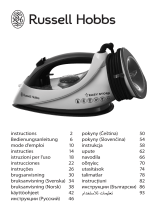7
The iron heats up more quickly than it cools down, so always start with
the fabrics that require the lowest ironing temperature (synthetic
fabrics).
• If the article consists of various kinds of fibres, always select the
temperature required by the most delicate fibre (so the lowest
temperature). If, for example, a piece of fabric consists of 60% polyester
and 40% cotton, it should be ironed at the temperature required by
polyester (
11
) without any steam.
If you are not sure what fabric the article to be ironed is made of, find
out which temperature is appropriate (starting at a relatively low
temperature) by ironing a piece of material that will not be visible when
you wear or use the article.
• 100% woollen fabrics may be pressed with the iron set to a steam
position. It is advisable to set the steam control to position 2 and to use
a dry pressing cloth.
When woollen fabrics are steam-ironed, shiny patches may occur. You
can prevent this by ironing the article inside out.
• Velvet and other fabrics that tend to acquire shiny patches should be
ironed in one direction only (along with the nap) without exerting any
pressure. Keep the iron moving constantly.
• Synthetic materials and silk should preferably be ironed inside out to
prevent the fabric from becoming shiny. Do not spray any water onto the
fabric since this might cause stains.
Setting the temperature
- Put the iron on its heel.
- Set the temperature control dial (A) to the temperature as indicated on
the label of the article or in the table (fig. 5).
- Put the mains plug in the socket.
- The iron is ready to be used as soon as the orange temperature pilot
light (H) has gone out and then comes on again.
Type HI 444: the iron is ready to be used as soon as the orange pilot
light (P) has gone out and then comes on again.
• While you are ironing, the orange pilot light will go on from time to time.
• If you set the temperature control dial to a lower setting after ironing at a
high temperature, do not begin ironing again until the orange pilot light
has come on and has gone out again.























